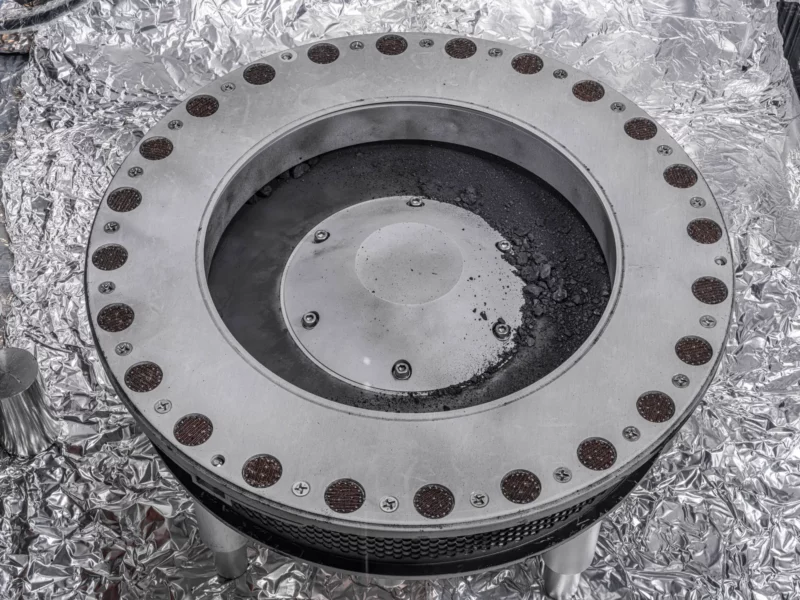
JOHNSON SPACE CENTER, Texas—As they unveiled the first samples recovered from an asteroid on Wednesday, scientists were giddy at the prospects of what this material will tell us about the origin of our planet and possibly even ourselves.
After seven years in space, a small spacecraft carrying samples from the asteroid Bennu landed in a Utah desert in late September. Following carefully choreographed procedures to prevent the contamination of the asteroid dust and rocks from life on Earth, the samples were transferred to a clean room at Johnson Space Center in Houston two weeks ago. Since then, scientists have examined some of the material that was collected outside of the primary container to glean some initial insights. They revealed some of their first data during an event at the center on Wednesday.
"Boy, did we really nail it," said Dante Lauretta, a scientist from the University of Arizona who is the principal investigator of the OSIRIS-REx mission.
Scientists have not even opened the main container yet, a process that will unfold in the coming weeks as cataloging all of this material begins. Before the launch of this mission, scientists said the recovery of 60 grams of material would be considered a success. While the effort to determine the overall mass is ongoing, Lauretta said early estimates are that the asteroid capture mission collected about 250 grams of pebbles and dust from the surface of Bennu.
After the material is cataloged, it will be loaned out in small quantities to 230 scientists across 35 countries who are members of the Origins, Spectral Interpretation, Resource Identification and Security-Regolith Explorer, or OSIRIS-Rex mission team.
Digging into our origins
So what's the big deal about recovering pristine samples from the surface of an asteroid? The big deal is that Bennu, an asteroid in a near-Earth orbit that is about one-half kilometer across, is believed to be a time capsule for the types of rocks and chemicals that existed when the planets formed in our Solar System more than 4 billion years ago. By studying Bennu, scientists are looking back to that primordial era when Earth began transitioning from an extremely hot world with a hellish surface environment into something more like a mud ball.
Poking these pebbles and rocks with sophisticated equipment here on Earth may allow Lauretta and the other scientists to answer questions about how terrestrial planets like Earth and Mars formed and possibly whether asteroids seeded Earth with the building blocks for life.
In a preliminary analysis of some of the dust, Lauretta said scientists hit the jackpot with a sample that is nearly 5 percent carbon by mass and has abundant water in the form of hydrated clay minerals. It is highly plausible that asteroids like this delivered the vast majority of the water now found in Earth's oceans, lakes, and rivers billions of years ago.

By piecing together clues from the asteroid dust—both its water and organic molecules—the scientists believe they may better understand how Earth went from an uninhabited mudball to the world teeming with life today.
"This is incredible material," said Daniel Glavin, a co-investigator on the mission. "It’s loaded with organics. If we're looking for biologically essential organic molecules, we picked the right asteroid, and we brought back the right sample. This is an astrobiologist's dream."
reader comments
105